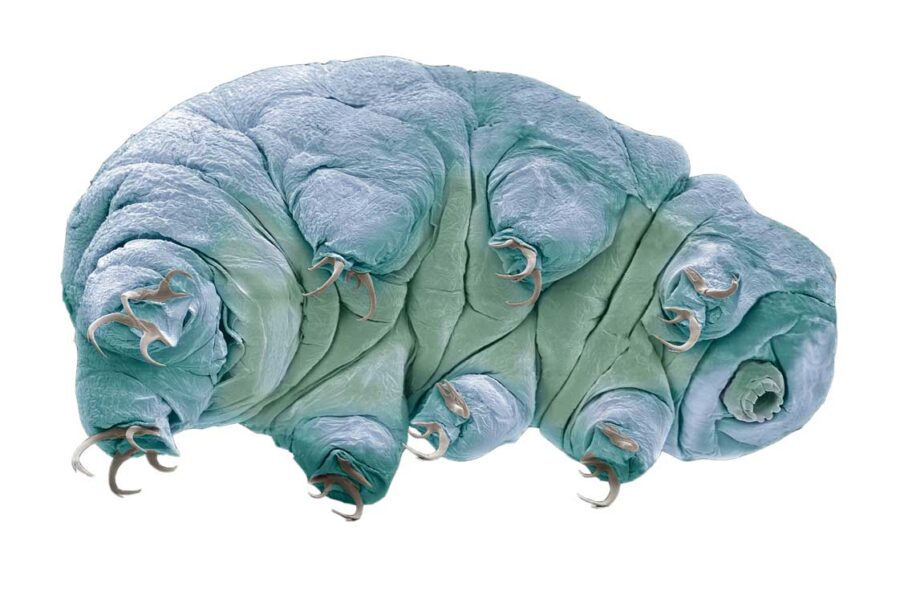Could microorganisms travel between the stars?

Steve Gschmeissner / Science Photo Library
Age-old speculation that life might hitchhike between planets revived in the 1980s with our discovery that meteorites from Mars occasionally pelt Earth. Add to that the discovery of extremophile species that can withstand huge extremes of temperature, desiccation, and radiation. However unlikely such an origin might seem for planetary life, we have to weigh it against the (still completely unknown) probability that life can readily spring from the native chemistry of a young world.
As I’ve discussed (S&T: Mar. 2018, p. 14), we’ve recently detected objects entering our solar system from other star systems. Those fleeting visits naturally make me wonder about interstellar panspermia, the phenomenon by which — it’s hypothesized — life might spread between worlds orbiting different stars. Now two new studies have me thinking afresh about this.
One study involves small earthworms, Pontodrilus litoralis, that burrow into beaches, mudflats, and other coastal habitats around the world. Birds don’t carry them, so how do they travel across oceans? Keryea Soong of Taiwan’s National Sun Yat-sen University and two colleagues found that these little guys are adept at tunneling into, and living off of, driftwood, so they can float from place to place, munching on their rafts to stay alive.
The other study is titled “Panspermia in a Milky Way–like Galaxy.” A team of Chilean, Korean, and French scientists used sophisticated models to simulate four steps of a hypothetical process: ejection of spores from planets, gravitational escape from stellar systems, transit between stars, and survival of spores across interstellar distances. The team concludes that life is more likely to originate in new stellar systems than be shuttled between the stars. However, they also admit that both probability estimates depend critically on unknown quantities.
Driftwood transport works between islands here because tiny critters can drift on timescales that are short compared to their life expectancy. But to take evolutionary advantage of an interstellar dissemination vector, natural selection would require multiple generations using impact explosions to loft spores from planet to planet.
I’ve tried (on the back of an envelope) to model creatures that can evolve to do so. You’d need spores to be spread widely enough on a planet, and survive for long enough, to have a decent chance of being carried to another world after the next impact event. I couldn’t make it work, and I doubt nature could either.
Spacefaring bugs, then, would have to accidentally evolve in a way that makes them fit for interstellar travel. Some of the hardiest Earth organisms — think tardigrades or extremophilic bacteria — can last for a few years desiccated and irradiated in space. But could anything survive for millions of years in such conditions? Our limited experimental data suggest that, even though the extreme cold of space might greatly increase survival against radiation damages, much shorter survival times are likely.
So, could our universe be full of life that has spread naturally over time from star to star, hiding like worms in driftwood, inside ejected rocks? Ultimately, we’re still comparing unknowns. It seems more likely that life forms indigenously, and that’s where I’ll place my bets for now. But until we find some examples of ET life and learn how and if we’re related to it, we have to allow for the intriguing possibility of life drifting throughout the galaxy on interstellar flotsam.
This article originally appeared in print in the March 2022 issue of Sky & Telescope.
 0
0
Comments
You must be logged in to post a comment.